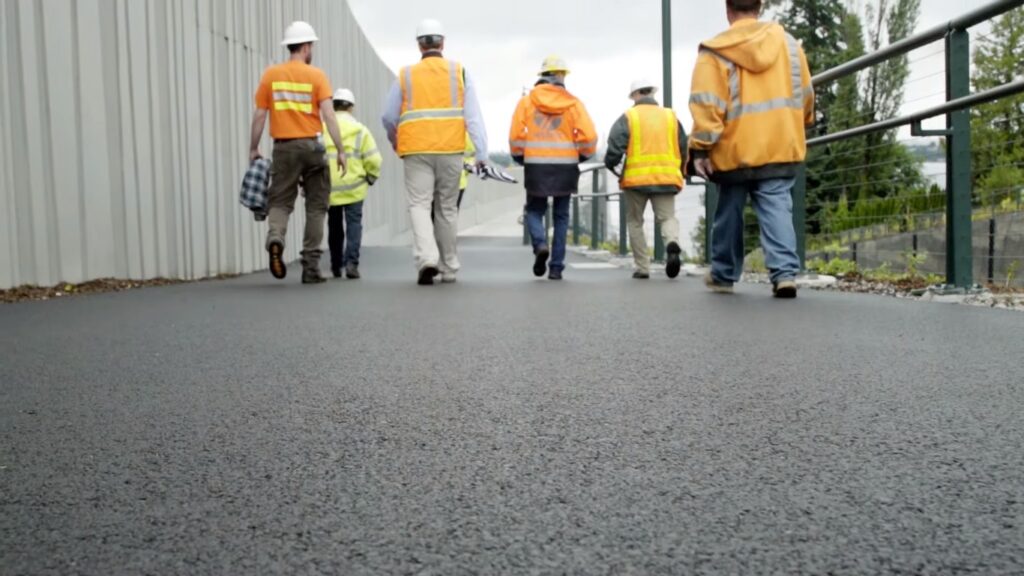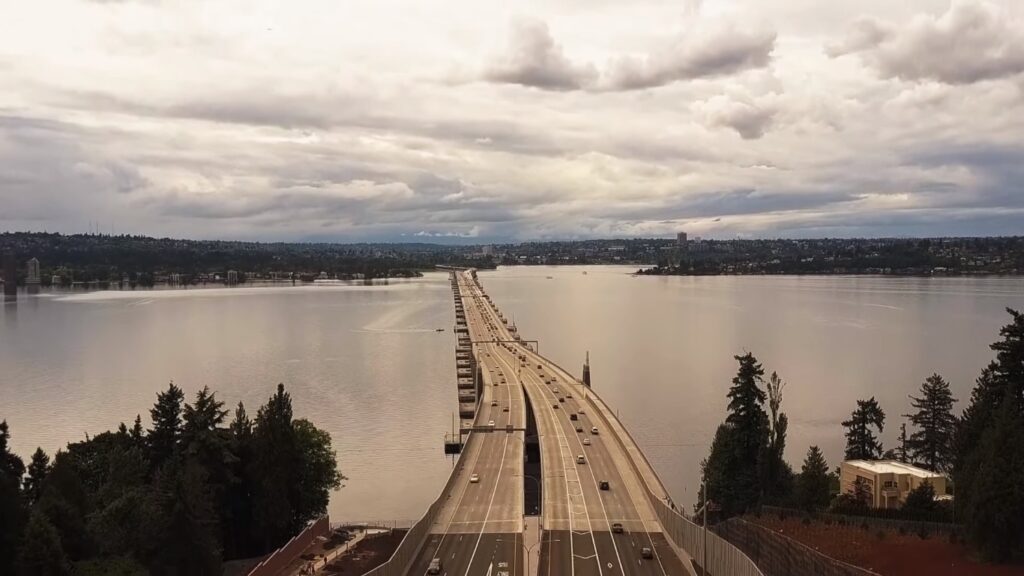Floating bridges are a remarkable feat of engineering that allows for the construction of bridges over bodies of water where traditional bridges are not feasible. Longest floating bridge in the world is the Evergreen Point Floating Bridge, also known as the Governor Albert D. Rosellini Bridge, which spans Lake Washington in Seattle, Washington.


What are the Secrets Behind the Construction of Such Long Floating Bridges?
- Pontoon Design: Floating bridges are supported by large pontoons that provide buoyancy and stability. These pontoons are typically made of concrete and are designed to support the weight of the bridge deck and withstand the forces of wind, waves, and currents. Design and construction of these pontoons are critical to the success of a floating bridge.
- Anchoring System: Floating bridges require a robust anchoring system to keep them in place and prevent them from drifting or moving during extreme weather conditions. Anchoring system typically consists of large cables or chains that are anchored to the lakebed or shoreline. These anchors are essential for maintaining the position and stability of the bridge.
- Flexible Connections: Floating bridges are designed with flexible connections that allow them to move and adjust to changes in water levels, wind, and waves. Flexibility is crucial for ensuring the structural integrity of the bridge and preventing damage from forces such as earthquakes or strong winds.
- Maintenance and Monitoring: Due to their unique design and location, floating bridges require regular maintenance and monitoring to ensure their safety and longevity. Includes inspections of the pontoons, anchor systems, and bridge deck, as well as monitoring of water levels and environmental conditions.
Mysteries of Engineering Rosellini Bridge
Mysteries and secrets behind the construction of this iconic floating bridge:
- Innovative Pontoon Design: Rosellini Bridge features a unique pontoon design that consists of 77 hollow concrete pontoons, each measuring 360 feet in length. These massive pontoons provide the buoyancy and stability needed to support the weight of the bridge deck and withstand the forces of wind and waves. Design and construction of these pontoons were a key factor in the success of the bridge.
- Record-breaking Length: Rosellini Bridge holds the record for being the longest floating bridge in the world, with a total length of 7,708 feet. Sheer length of the bridge presented significant engineering challenges, requiring careful planning and innovative solutions to ensure its stability and durability.
- Seismic Resilience: Seattle is located in a seismically active region, making earthquake resilience a top priority for the Rosellini Bridge. Bridge was designed with flexible connections and seismic retrofitting measures to ensure its ability to withstand strong earthquakes and ground movements.
- Environmental Considerations: Construction of the Rosellini Bridge took into account environmental factors, such as protecting the lake ecosystem and minimizing impact on wildlife habitats. Special care was taken to design the bridge in a way that minimizes disruption to the surrounding environment.
- Maintenance Challenges: Floating bridges require regular maintenance and monitoring to ensure their safety and longevity. Rosellini Bridge is no exception, with ongoing maintenance efforts to inspect and repair the pontoons, anchor systems, and bridge deck to ensure the bridge’s continued operation.
Frequently Asked Questions (FAQ)
What is the Rosellini Bridge and why is it significant?
Rosellini Bridge, also known as the Evergreen Point Floating Bridge, is significant because it is the longest floating bridge in the world. Spanning 7,710 feet across Lake Washington, it connects Seattle to its eastern suburbs and is a marvel of engineering and design.
How does the Rosellini Bridge stay afloat?
Bridge stays afloat using 77 massive, buoyant concrete pontoons. These pontoons are anchored to the lakebed, which keeps the bridge stable and secure despite environmental factors like wind and water currents.
What were the challenges faced during the construction of the Rosellini Bridge?
One of the main challenges was the depth of Lake Washington and the soft lakebed, which made traditional bridge-building methods impractical. Solution involved engineering large pontoons and securing them with anchors to withstand the environmental forces.
What makes the Rosellini Bridge an engineering marvel?
Rosellini Bridge is an engineering marvel due to its sheer size, the innovative use of pontoons for buoyancy, and the ability to withstand the area’s natural elements. Its construction showcases human ingenuity in overcoming geographic and environmental challenges.
How does the Rosellini Bridge impact the environment?
Bridge was designed with environmental considerations in mind. Its floating nature means there is minimal impact on the lake’s ecosystem compared to traditional bridges, as it requires fewer piers and less disturbance to the aquatic habitat.
How long is the Rosellini Bridge expected to last?
Rosellini Bridge has a design life of 75 years, meaning it is expected to serve its purpose without requiring major reconstruction for that duration.
Construction of long floating bridges involves a combination of innovative design, robust materials, and careful planning to ensure their success. Governor Albert D. Rosellini Bridge is a testament to the ingenuity and skill of engineers who have mastered the art of building bridges that seemingly defy gravity.






